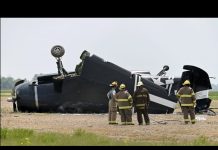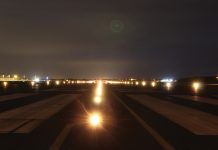A series of seemingly sensible actions contributed to the pilot of an Aero Commander 500 approaching the wrong runway at Moorabbin airport and flying within 300 metres of a Cessna 172.
The Australian Transport Safety Bureau (ATSB) report on the incident, issued today, is a cautionary story about how a combination of assumptions, reliance on technology and unfamiliarity led to potential danger. The Aero Commander pilot lined up with Moorabbin’s runway 17 Left instead of 17 Right and flew above and behind the Cessna, which was flying circuits on 17L.
ATSB Director Transport Safety Stuart Macleod said pilots were free to ask the tower for guidance when approaching an unfamiliar controlled airport. ‘When arriving during tower hours, advising ATC that you are unfamiliar with the airport alerts them to the fact you may require additional guidance.’
The Aero Commander pilot was flying from Bacchus marsh, west of Moorabbin, which is Melbourne’s major general aviation airport. The pilot had flown into Moorabbin once before as pilot-in-command. The pilot had talked with the operator’s chief pilot and a colleague about flying into Moorabbin and had studied the En Route Supplement Australia (ERSA) and satellite images of Moorabbin before the flight. En route the pilot consulted an electronic flight bag to display the runway configuration and set up the aircraft’s GNSS navigation to provide guidance.
A detail the pilot did not notice is that Moorabbin’s aerodrome reference point, its officially designated geographical location is on the eastern side of the airport, near runway 22 and 440 metres from the centre line of runway 17R. Another subtle detail is that the exact heading of runways 17R and 17L is 164 degrees.
‘Consequently, the inbound track configured for guidance was offset and deviated away from the runway centreline,’ the ATSB said. ‘At the point that the aircraft crossed the runway 17 centreline the navigation unit would have indicated that the aircraft was still significantly to the right of the inbound track. Therefore, it is likely that the navigation indications contributed to the pilot flying through the centreline of 17R and joining final for 17L.’
The ATSB found Moorabbin air traffic controllers had been looking at other traffic at the time the Aero Commander crossed the centre line.
Weather at the time was clear, with more than 10km visibility and light southerly wind.
When ATC saw the conflict controllers directed the Aero Commander to join upwind for runway 17R and directed the Cessna to continue its approach. The Aero Commander pilot had begun a left orbit but discontinued this.
The ATSB noted there had been, ‘73 instances of aircraft approaching or landing on the incorrect runway at Moorabbin between 2015 and July 2025.’
After the ATSB investigation the Aero Commander operator took action to advise its pilots about the potential for misleading indications when using the aerodrome reference point for navigation at Moorabbin Airport. The training school operating the Cessna advised it would be fitting Automatic Dependent Surveillance-Broadcast (ADS-B) to all Cessna 172s in its fleet that did not already have it.
Useful resources
- Controlled aerodromes and operations and flight planning resources are a focus of CASA’s Your safety is in your hands campaign. For guidance, tools and tips, visit the Pilot safety hub.
- Learn more about the safety benefits of ADS-B and the rebate scheme.





